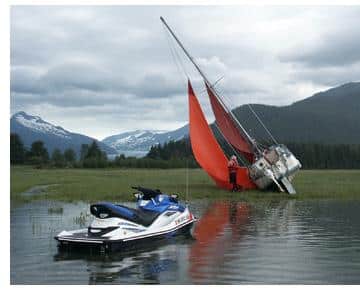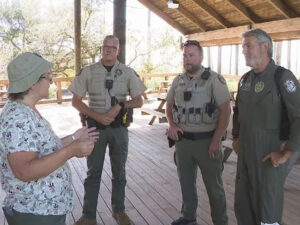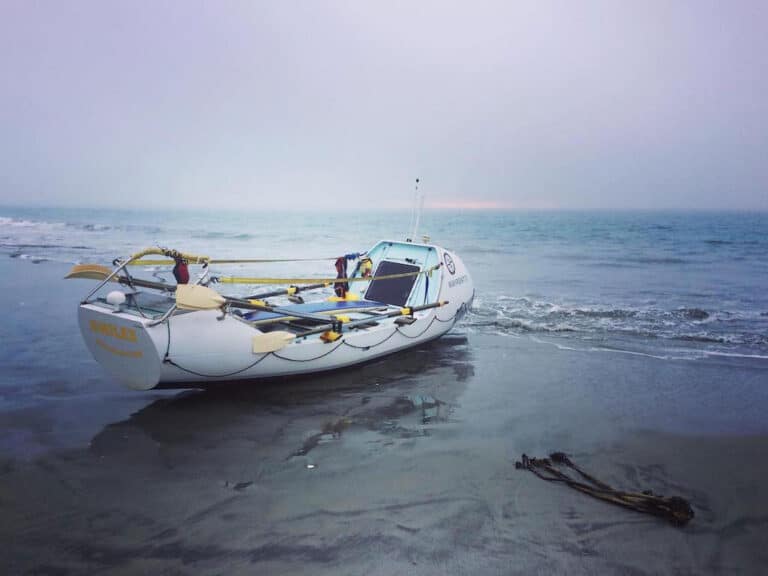
There are two kinds of boaters: those who have run aground and those who refuse to admit it. The facts are, navigational aids can, and do, drift off-station; every sounding on every chart isn’t accurate; and, well, we’ve all suffered distractions. Here’s what to do if your boat’s draft should suddenly exceed the water’s depth.
[1] Check out the bilge and all hull penetrations (tranducers, engine mounting bolts, pod flange rings, rudder posts, shaft logs and any fitting that penetrates the hull below the waterline) before trying to dislodge and, as a result, possibly making a bad situation worse. You might have put a hole in the hull, ruptured a through-hull fitting or bent an outboard or stern-drive mounting bolt. Aground is better than sunk.
[2] No leaks? Next make sure the engine’s cooling water intake won’t suck up mud and sand. Kill the genset. Many an engine overheats when the operator tries to power off a grounding and clogs the intake. Raise the drives, shift weight to raise a through-hull off the bottom, and proceed slowly to stir up as little muck as possible. Playing African Queen isn’t out of the question.
[3] Once off, go easy on the throttle. A bent shaft or propeller can cause more damage in operation than most groundings will.
[4] If there’s current, you may be able to get off by rocking the boat. Have the crew move from port to starboard. Each time the boat leans, the draft decreases, hopefully allowing the current to move the boat a few feet. Repeat until afloat.
[5] “Hard aground” means you’re high and dry, with little chance of getting off until the tide rises. “Soft grounding” usually results in little more than scraped paint.
The U.S. Coast Guard is asking all boat owners and operators to help reduce fatalities, injuries, property damage, and associated healthcare costs related to recreational boating accidents by taking personal responsibility for their own safety and the safety of their passengers. Essential steps include: wearing a life jacket at all times and requiring passengers to do the same; never boating under the influence (BUI); successfully completing a boating safety course; and getting a Vessel Safety Check (VSC) annually from local U.S. Coast Guard Auxiliary, United States Power Squadrons(r), or your state boating agency’s Vessel Examiners. The U.S. Coast Guard reminds all boaters to “Boat Responsibly!” For more tips on boating safety, visit www.uscgboating.org.








